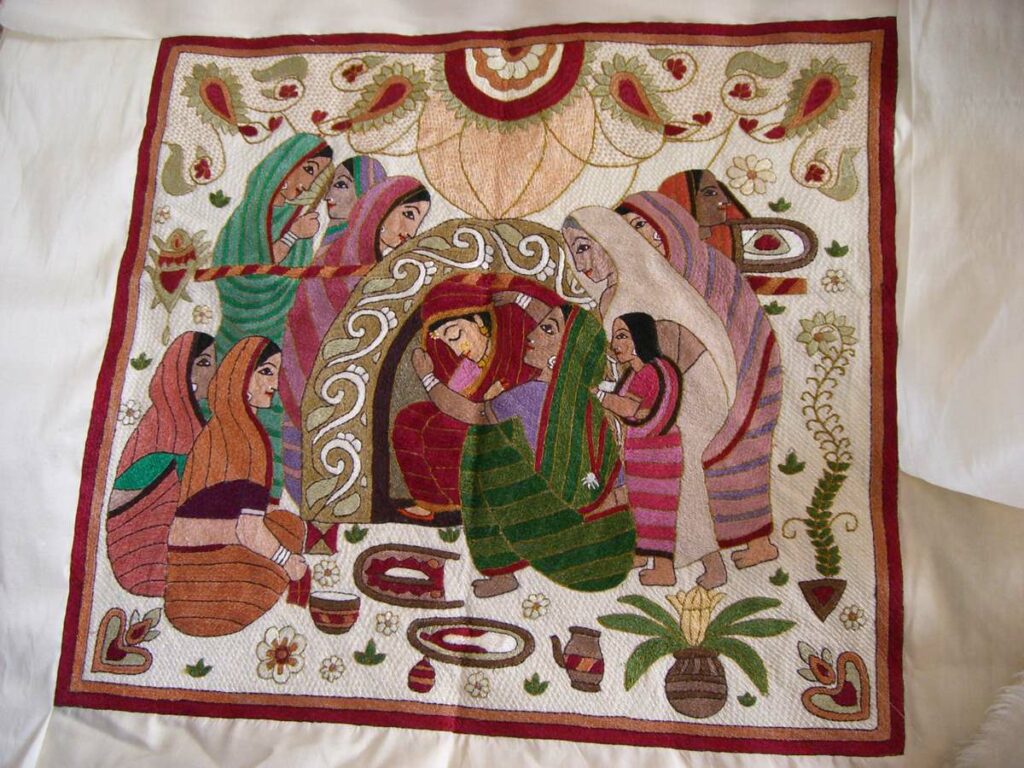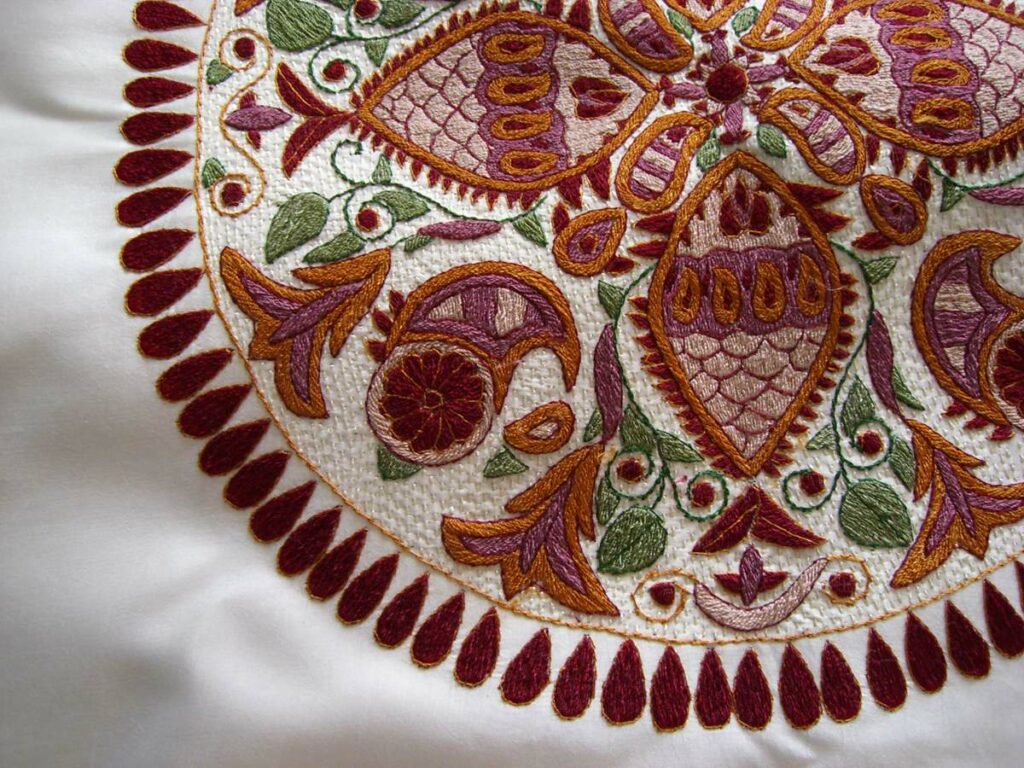NAKSHI KANTHA

(6 Minutes Read)
Though the earliest mention of Kantha is only five hundred years old, but the tradition of
making layered quilts from old clothes goes back much further. This is the most famous indigenous folk embroidered textile from Bangladesh. Nakshi Kantha, means the ‘Embroidered Quilt’ in Bengali. The word “Nakshi” means ‘decorated’ or ‘adorned’ and “Kantha” means ‘patched Clothes’.
Probably the kanthas originally were only patch-worked multiple layers of old fabrics, quilted together with running stitches. However, the decorated and embroidered versions of the Kanthas known as “Nakshi Kanthas” are a much later addition to this craft. The technique represents a type of quilts that are made from patching and stitching layers of old saree cloth and then creating elaborate narratives by using various motifs embroidered with colored threads drawn from old saree borders.
This technique is practiced by women only in a domestic environment. Traditionally, it is always taught by ‘mother-to-daughter’ and is done in a context of social interaction and artistic self- expression. A nakshi kantha originally is a ‘solo’ act. Meaning, one artisan would work on her own individual piece. It was only later, as the development organizations employed the Nakshi kantha skills to generate income for the artisans, it became a group activity. Because a large Nakshi kantha can be finished in comparatively less time if it is embroidered by several women.
DESIGN AND COMPOSITION
Traditionally it was never drawn and copied on the fabric, it was done free hand and using just the humble needle and repurposed threads. There may be some compositions and planning done to make space divisions and plan the placement of the motifs but it was always done ‘free hand’. It was like painting with a needle.




The motifs found on a Nakshi Kantha can include anything from a hand-fan to a peacock! The elements of a Nakshi kantha are truly of a diverse nature. We find motifs of wonderful mundane household objects to the very imaginary articles and characters from folklore and mythology. Religious figures and creatures from folk tales and lullabies all make their way into a wondrous pictorial narrative that we know as a Nakshi Kantha. To showcase the mastery of the maker there is this unique Nakshi Kanthas with border designs only. These are called the “paar tola Kantha’ or the kanthas with borders. A magnificent collection of borders are executed with various width and technicalities , mostly geometric in appearance.
Stitches used would also vary enormously. From a combination of special borders made with the humble running stitch, to a vast array of European stitches can be found in some old kanthas. For example, one kantha fragment has shown to have used chain, darning, satin, running, dot and seed stitches along with traditional stitches typical to a Nakshi Kantha.
TYPES AND USE OF NAKSHI KANTHA
The size and shape of the kantha would be determined by its end use. The Sujni Kantha is a decorative blanket or a coverlet. This kantha may be used for special occasions or for day to day use, based on the elaborateness of the decorative motifs embroidered on it. A Gilaf or a Bostani is used as a book cover, specially made for covering the religious books or texts. Dastarkhan is a small rectangular nakshi kantha to cover the place to serve food for a ceremony or special occasion.
A Jaynamaz is a Prayer Mat for the Muslims, whereas an Aashon– a ceremonial mat is for Puja and auspicious occasions for the Hindus. There were Nakshi Kanthas for personal use too. Arshilota a coverlet to keep the personal grooming objects or as a cover for the mirrors were often made and used by the artisans.
AT PRESENT
After the war of liberation, in 1971, Many development projects started to operate in different regions of Bangladesh. To help rebuild the war torn country, many economic and social development projects were initiated by the Government and Non-Government Organizations (NGOs). Harnessing the rural skills and local knowledge they aimed to develop income-generating activities. To financially support the economy the organizations worked with the village artisans to produce commercially viable products for the local and international markets. Nakshi Kantha as a traditional skill honed by the village women, played a vital role at this stage. The Government and the NGOs developed the Nakshi Kantha as a ‘cottage-industry’ to help generate income for the rural artisans. Since then the Nakshi kantha has gone through many changes and many adaptations to diversify its use and production.
Presently, the application of Nakshi Kantha techniques have expanded. Designers have reinvented the Nakshi Kantha embroidery to be applied on various lifestyle and fashion products. A whole array of home textiles, table linens and decorative objects for the home are produced using Nakshi Kantha techniques. The embroidery is also applied vastly on Bangladeshi fashion items for men, women and children.